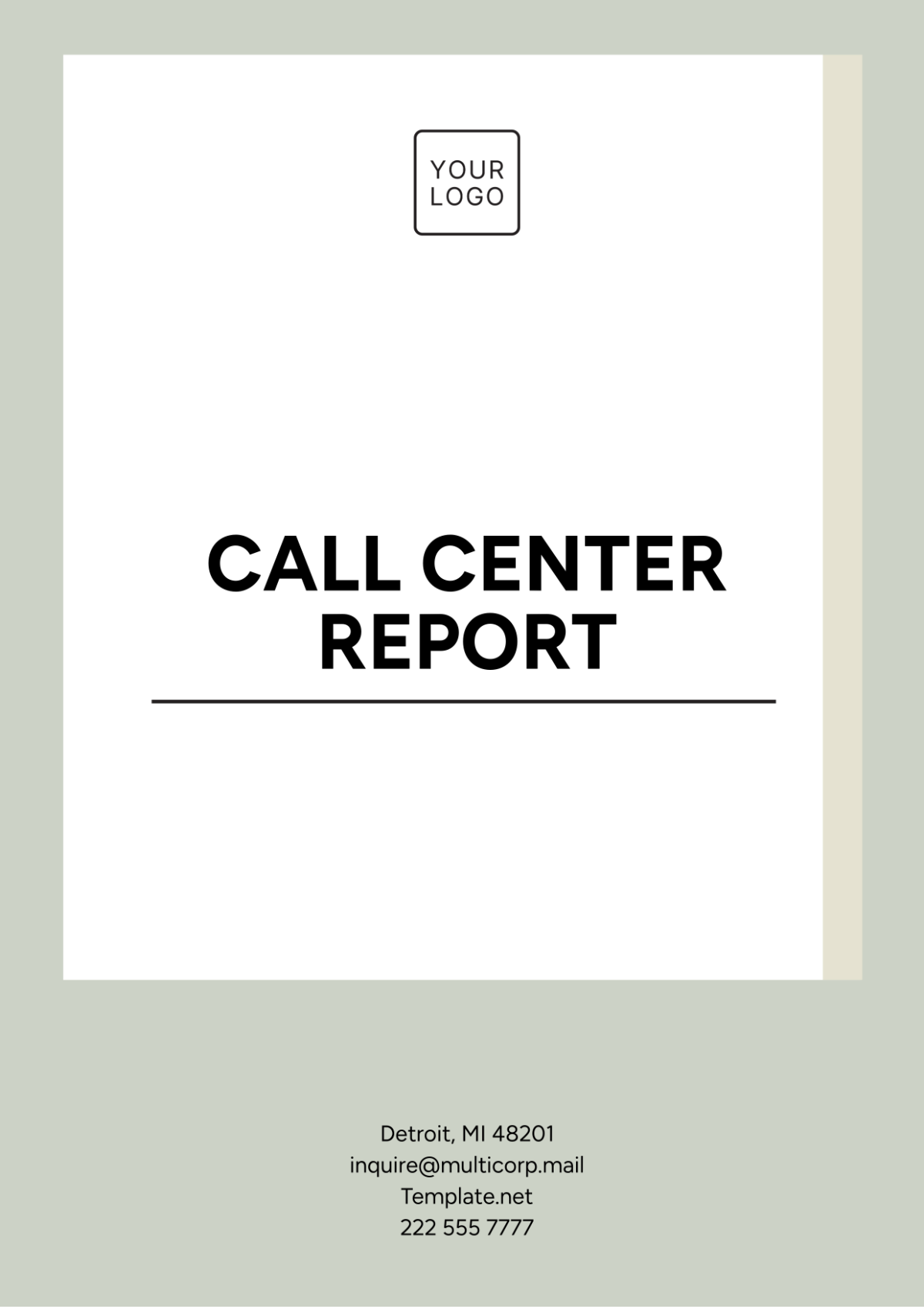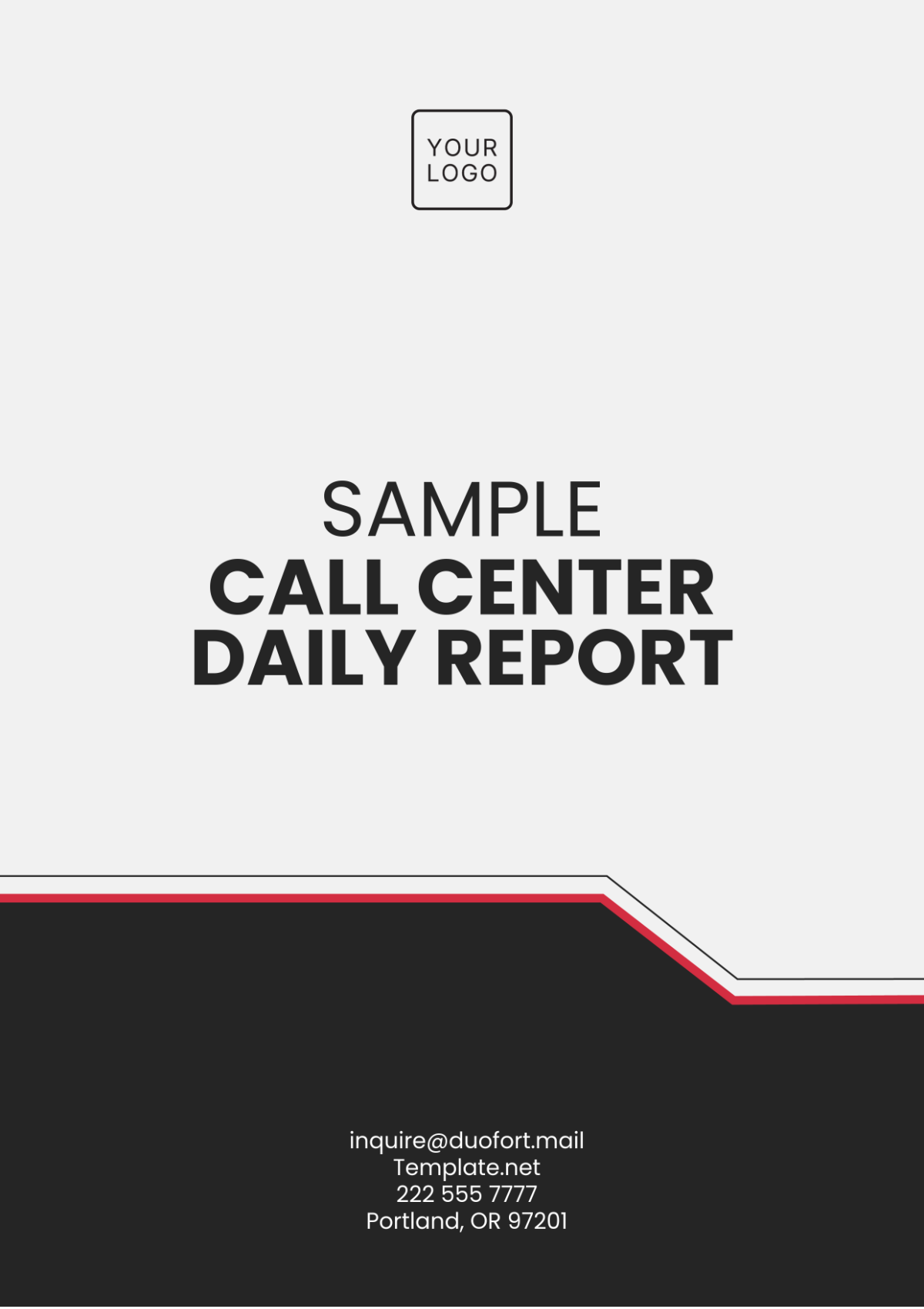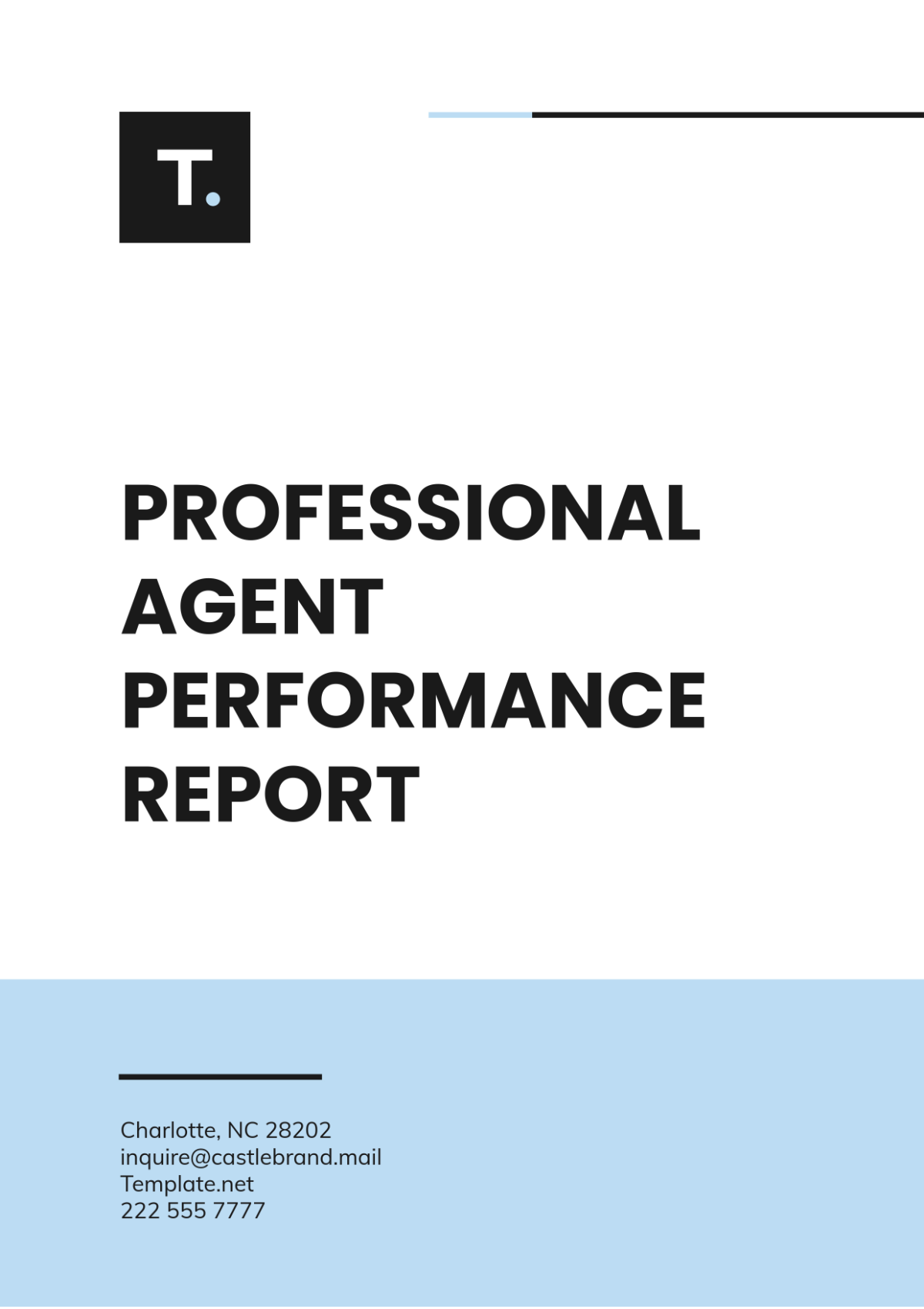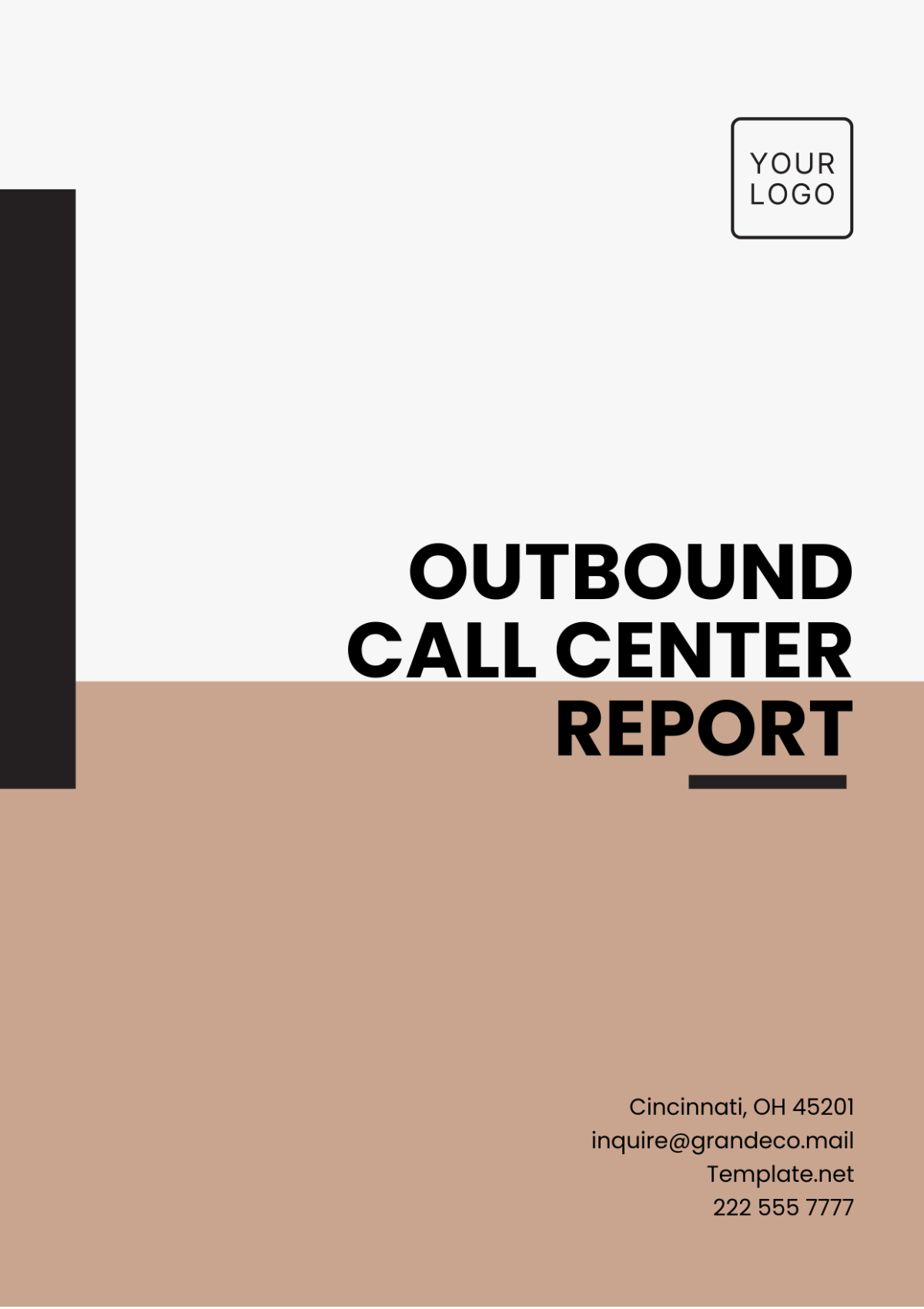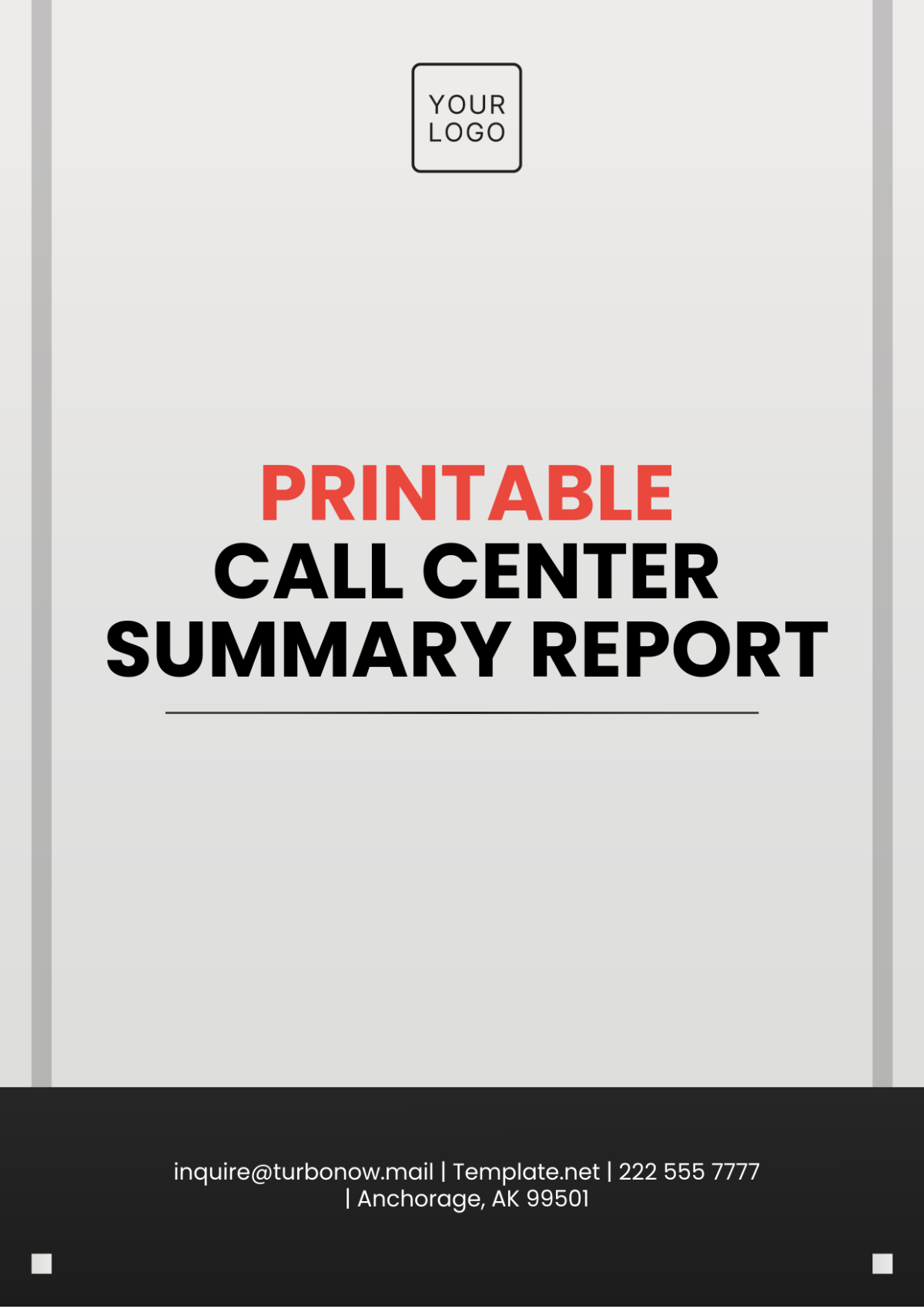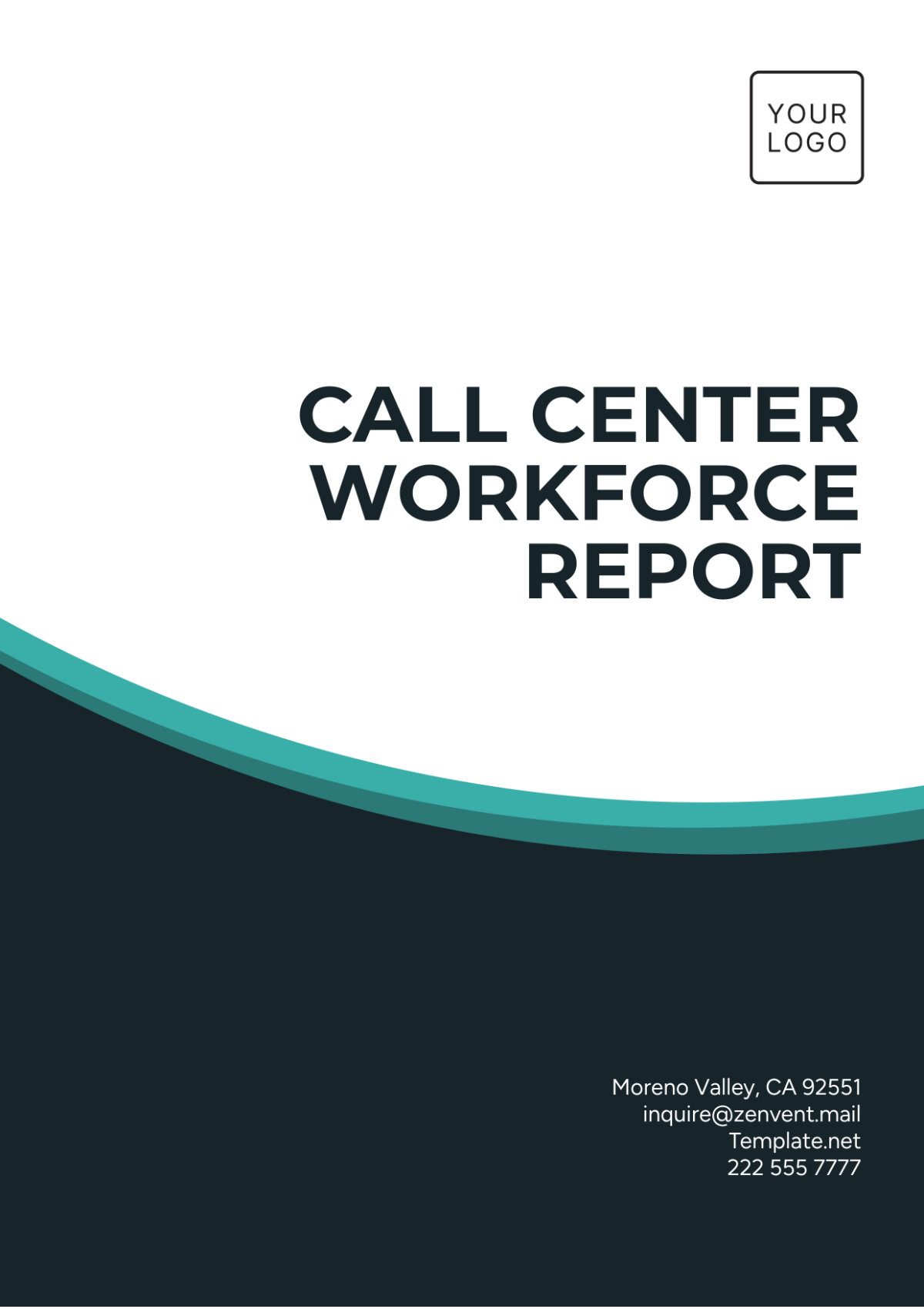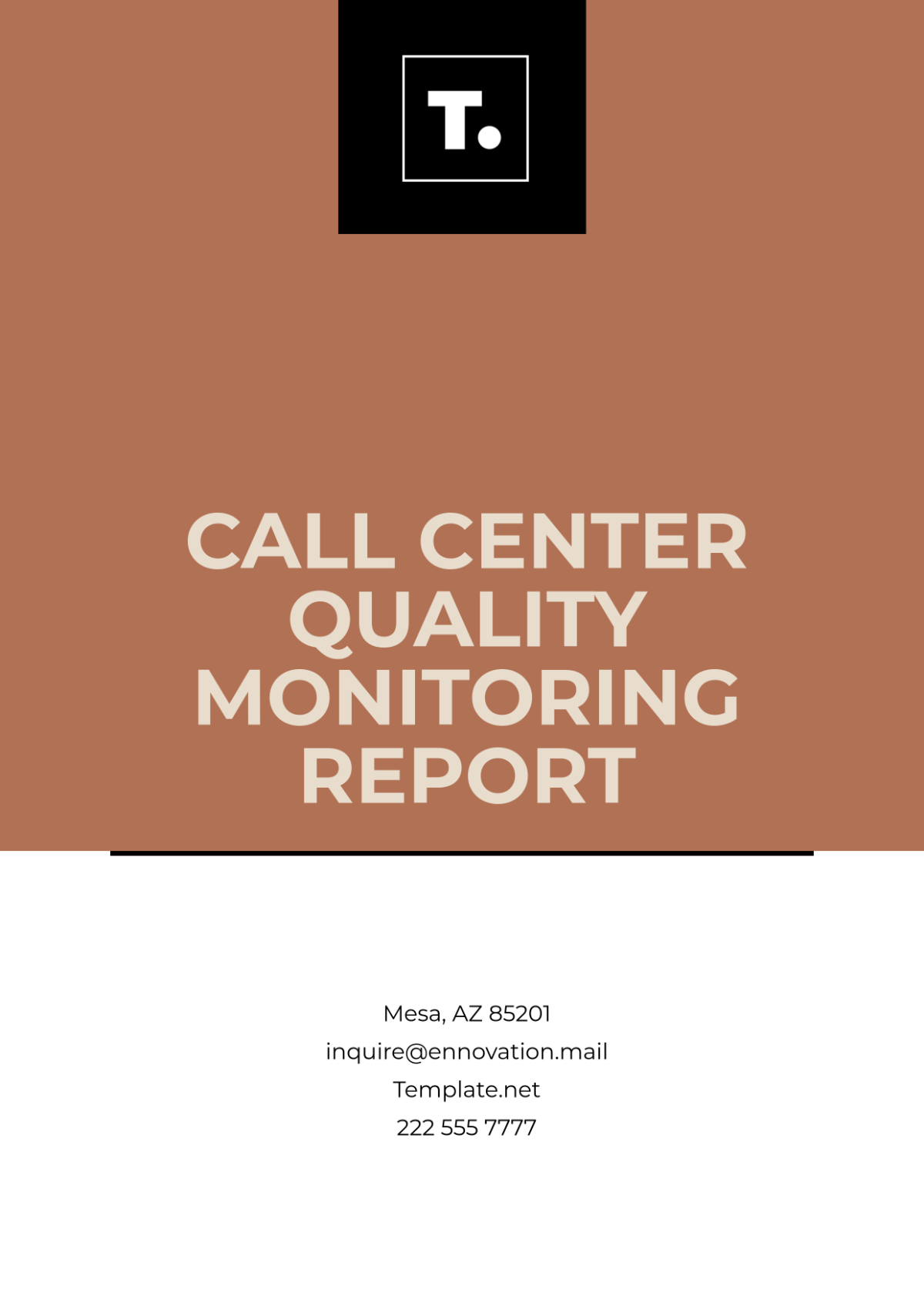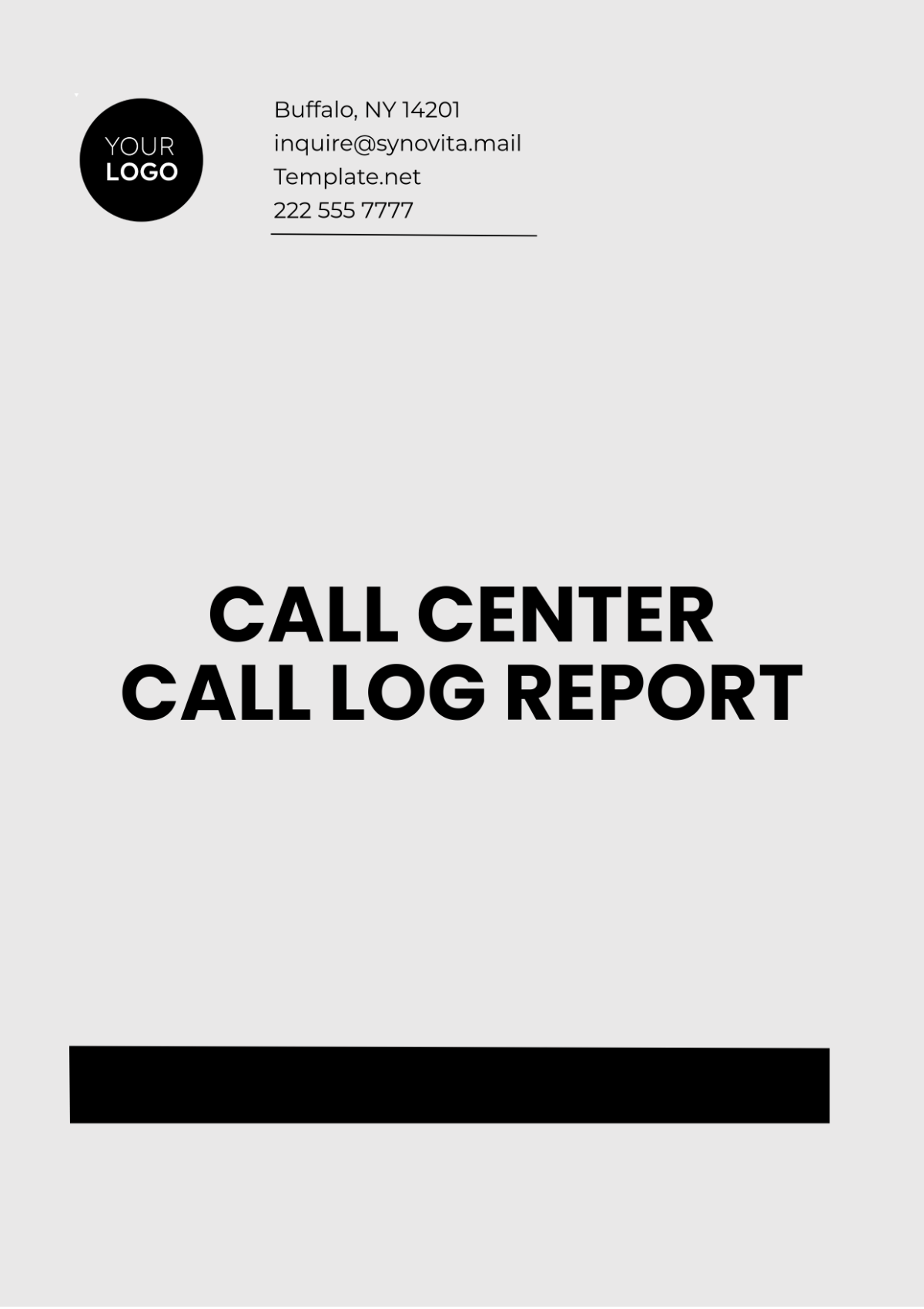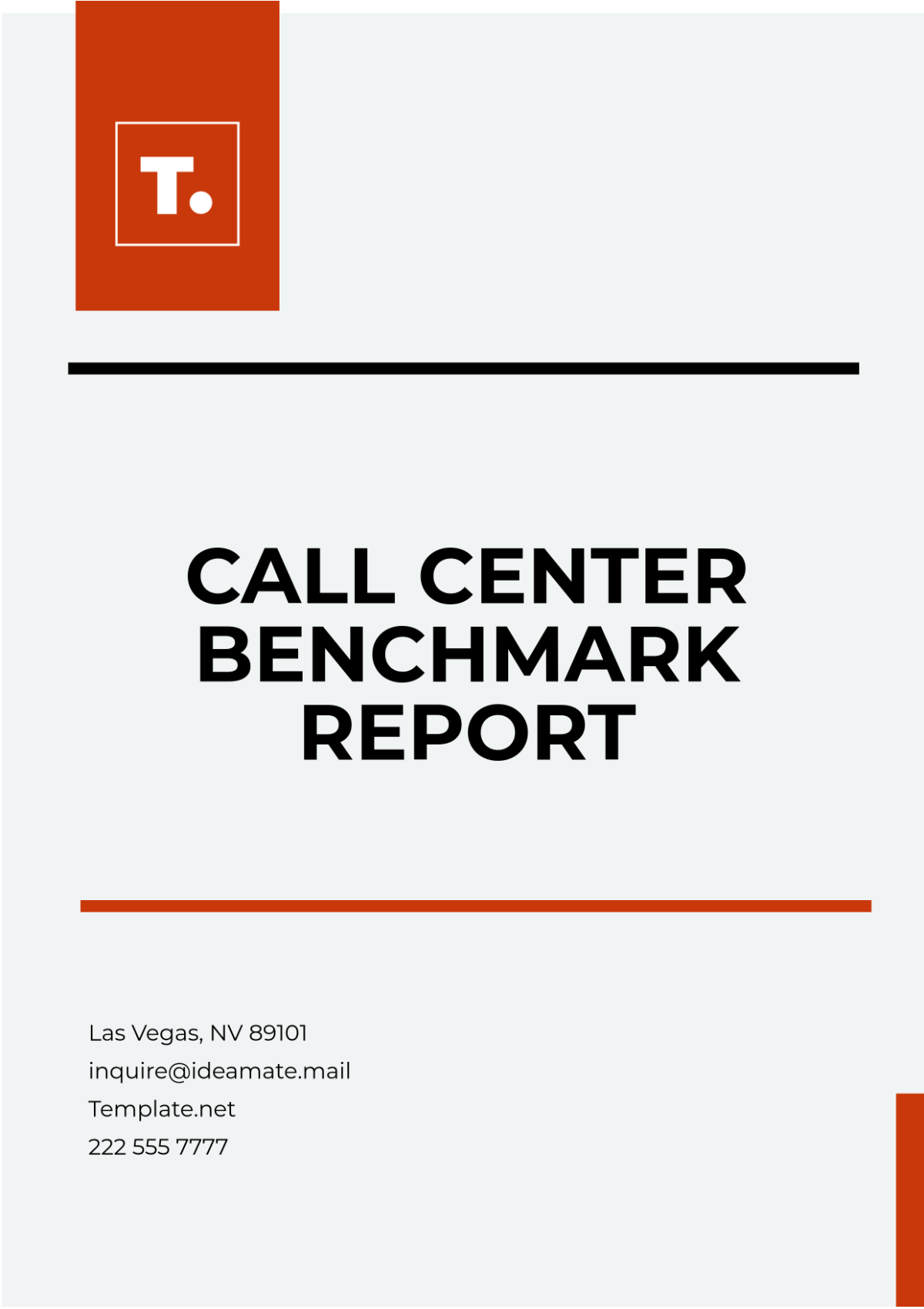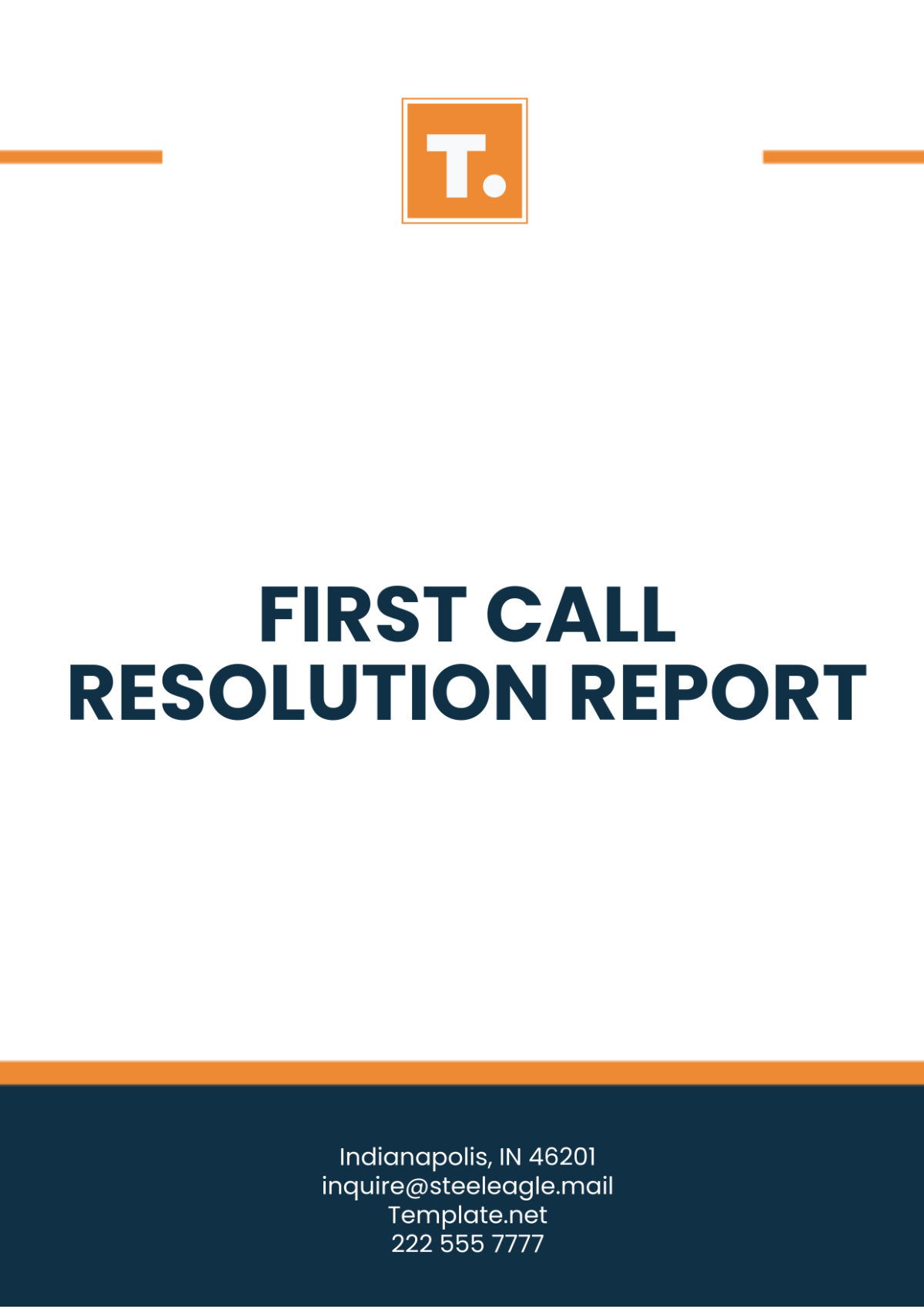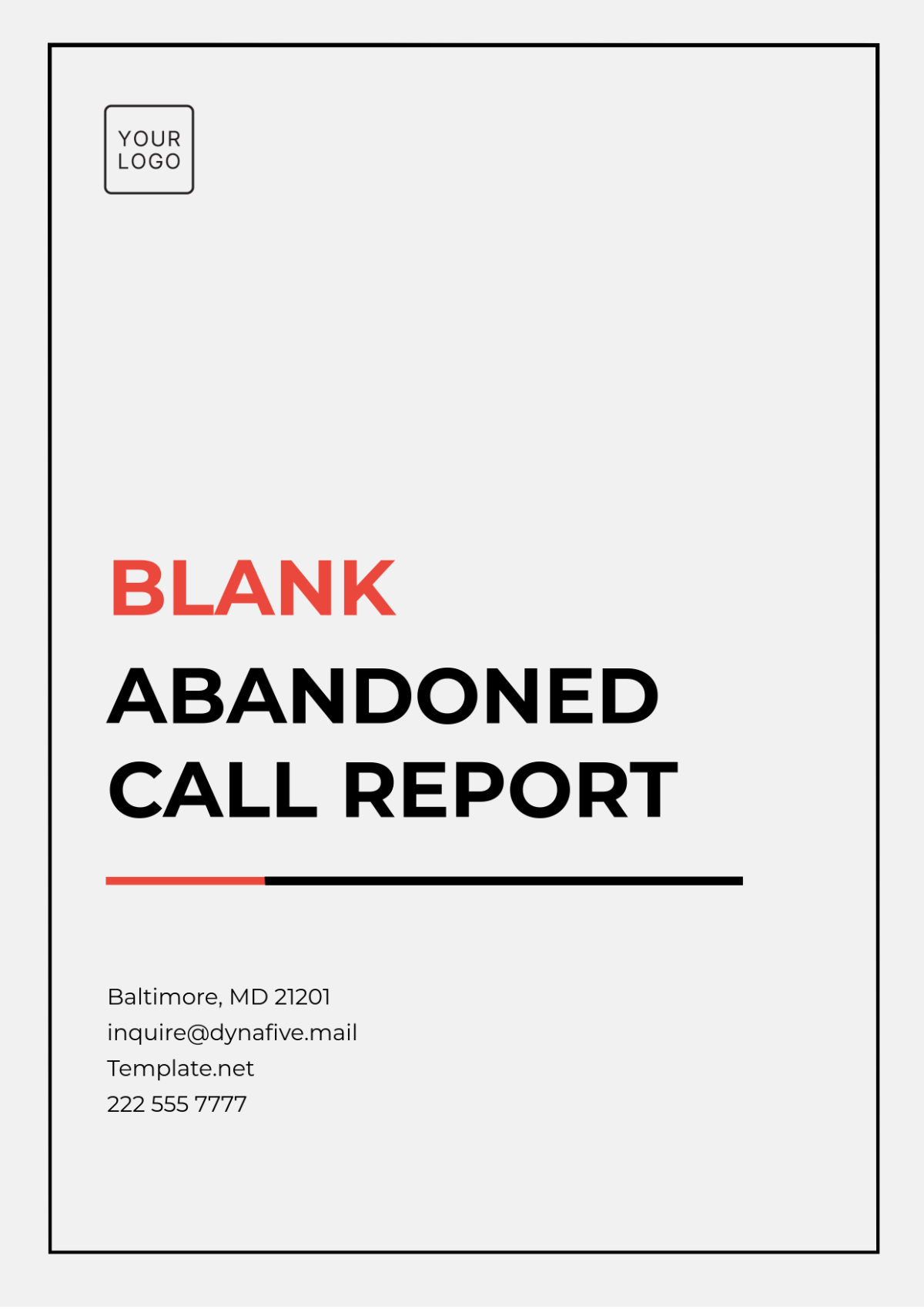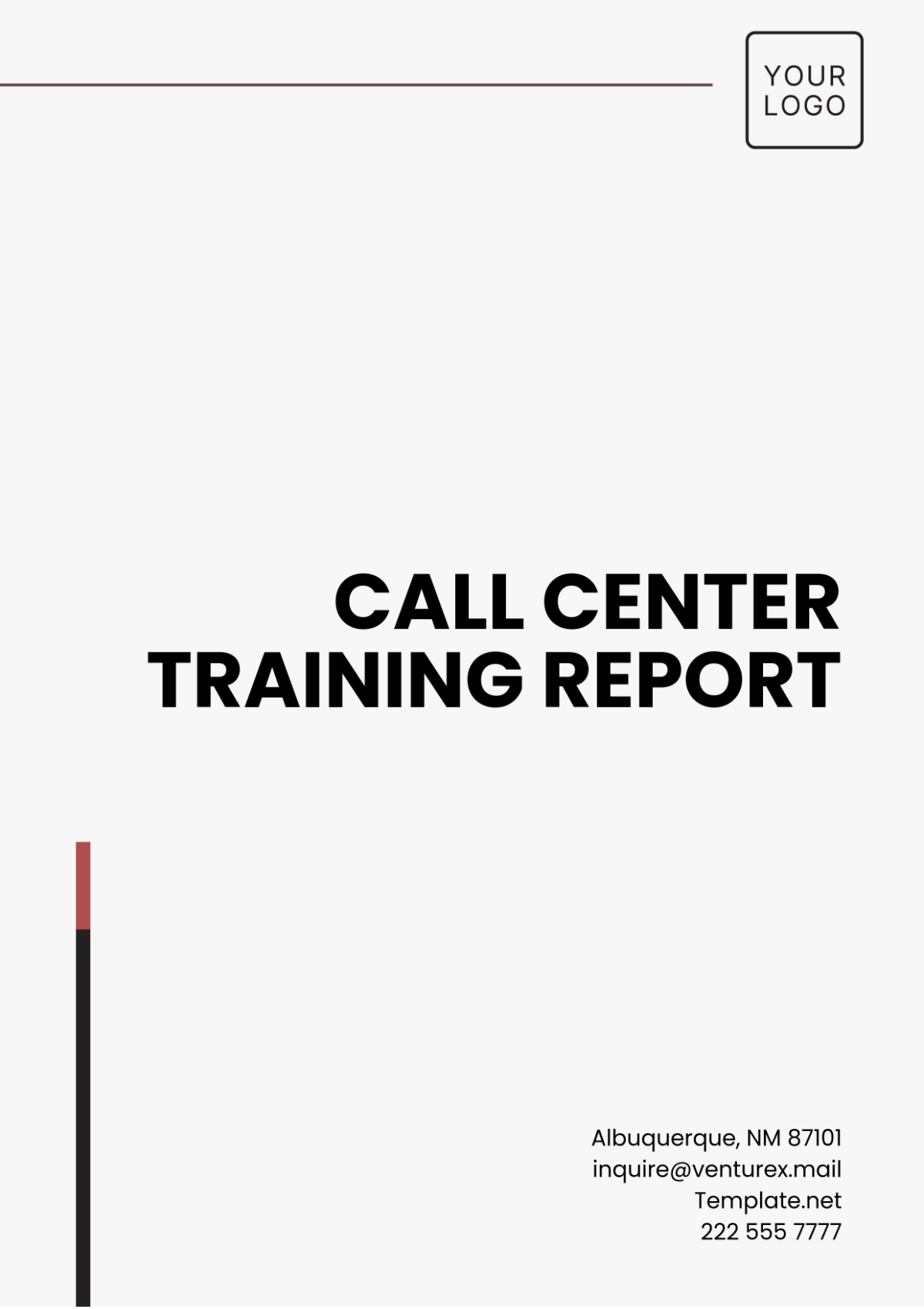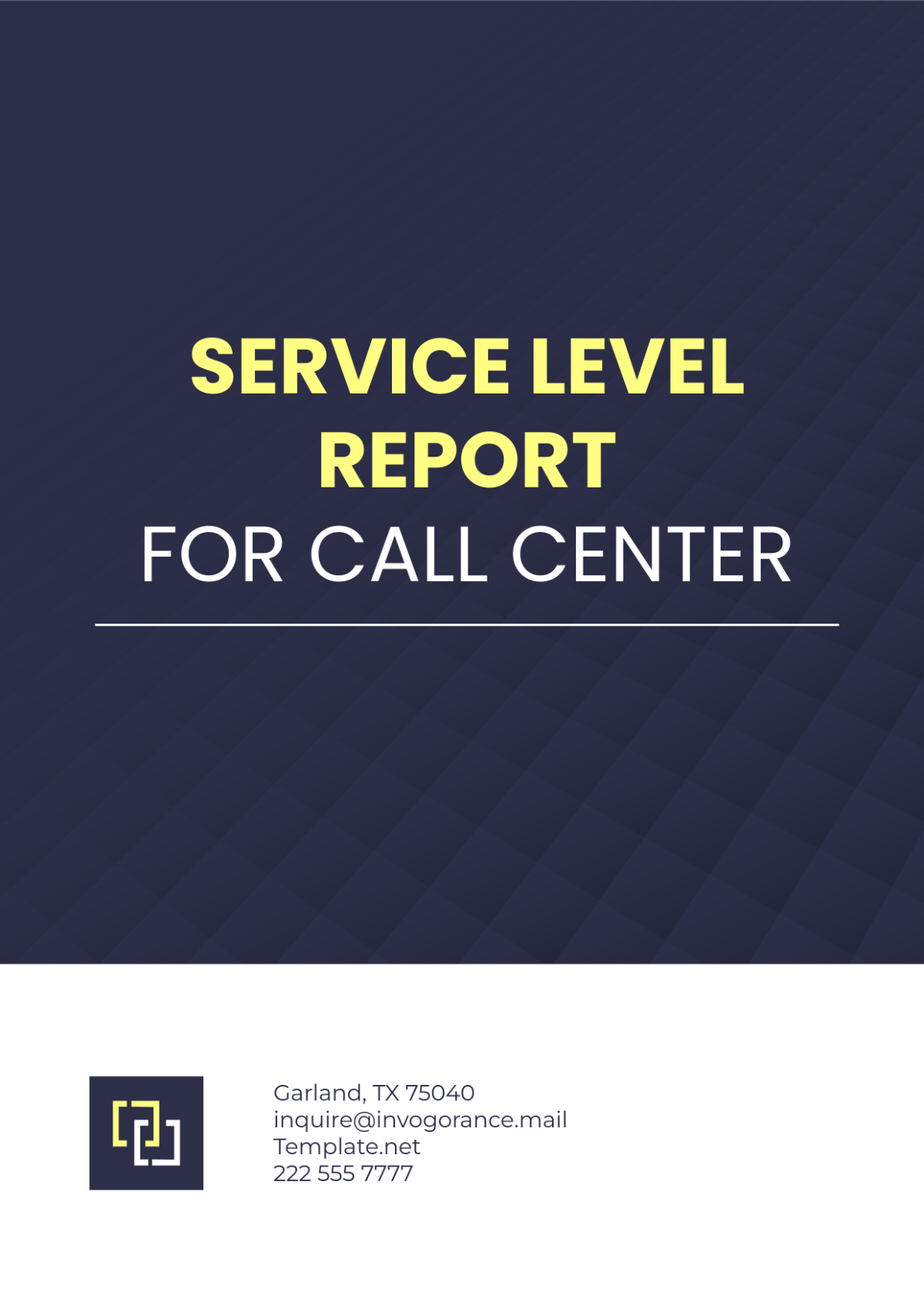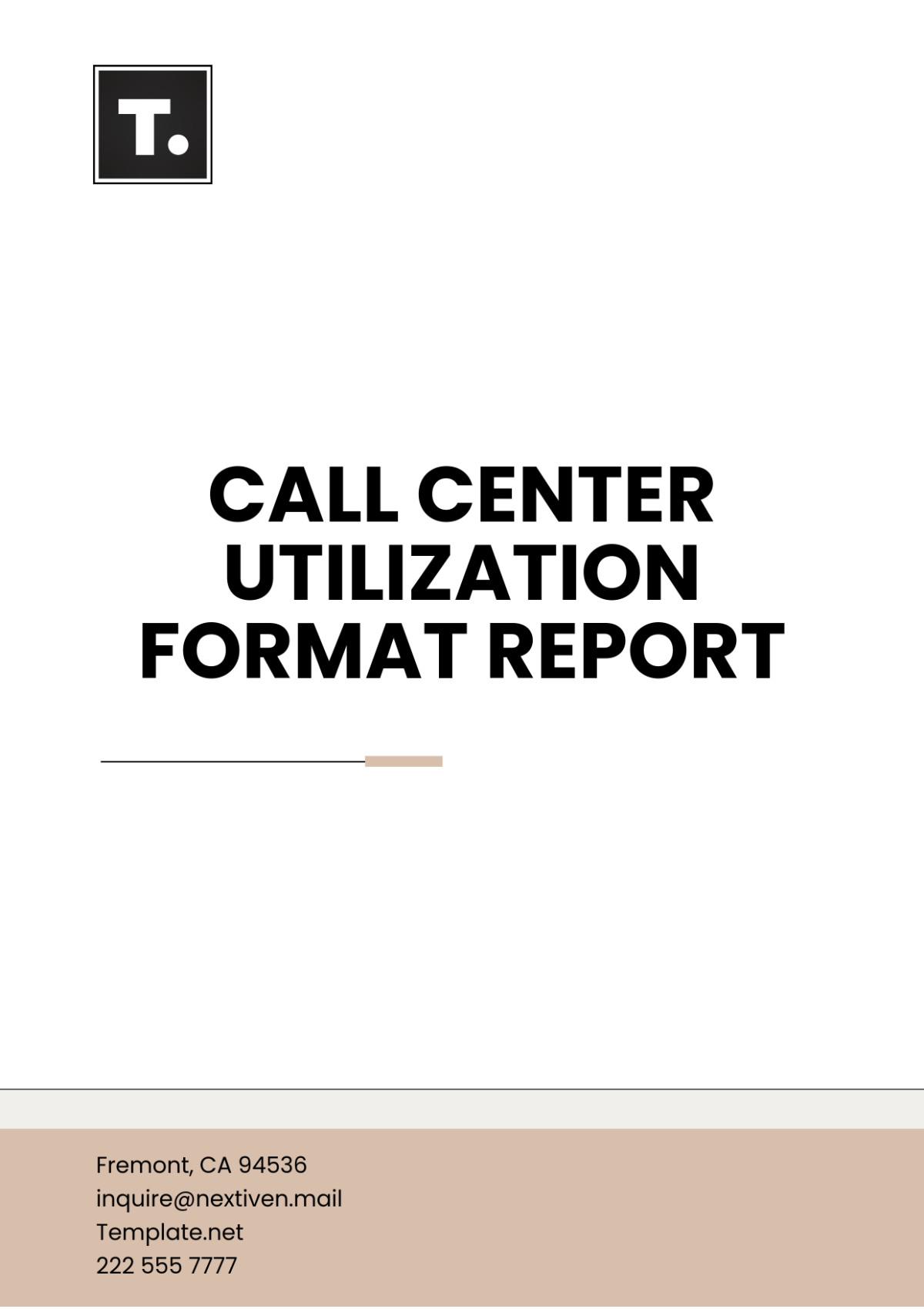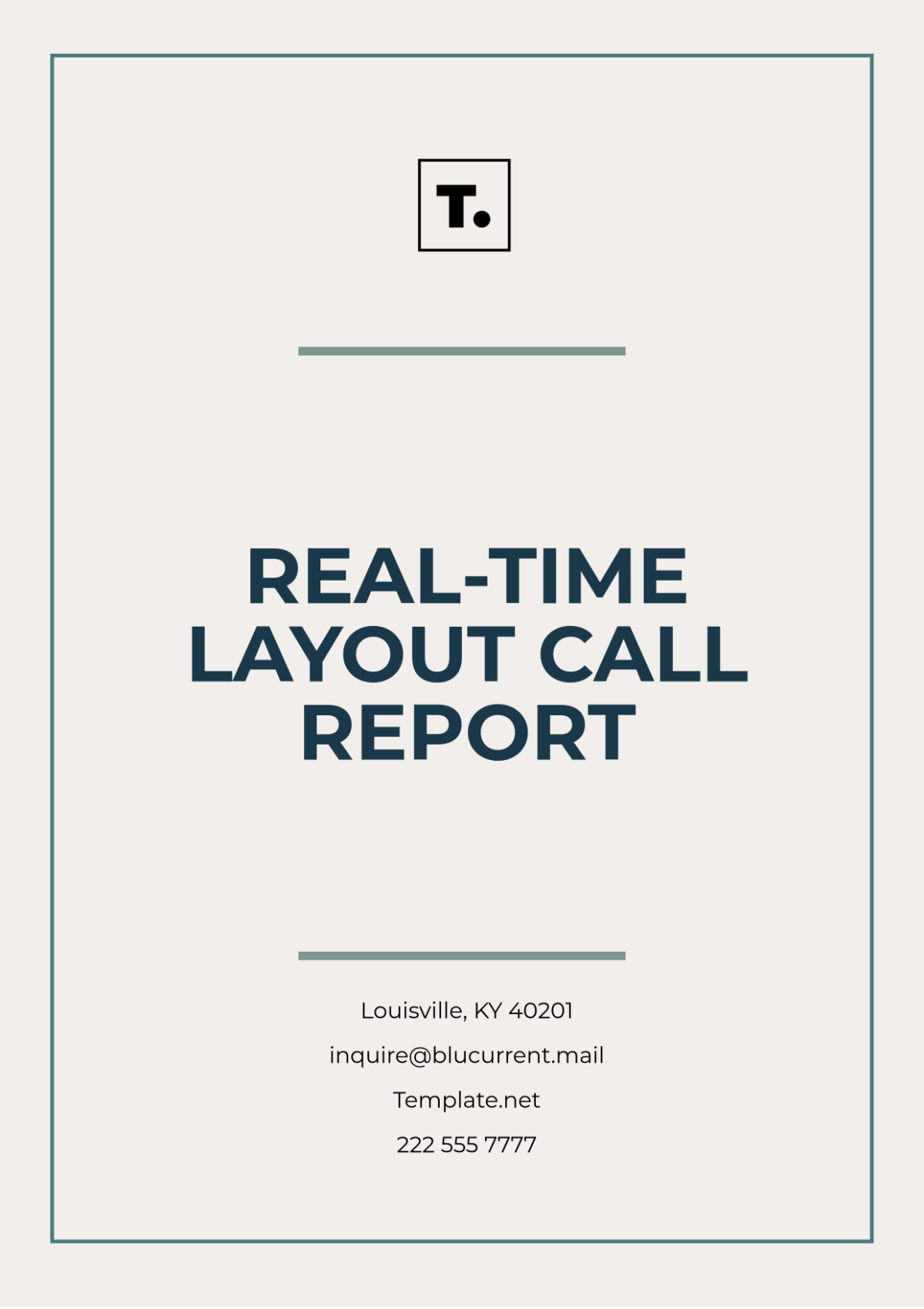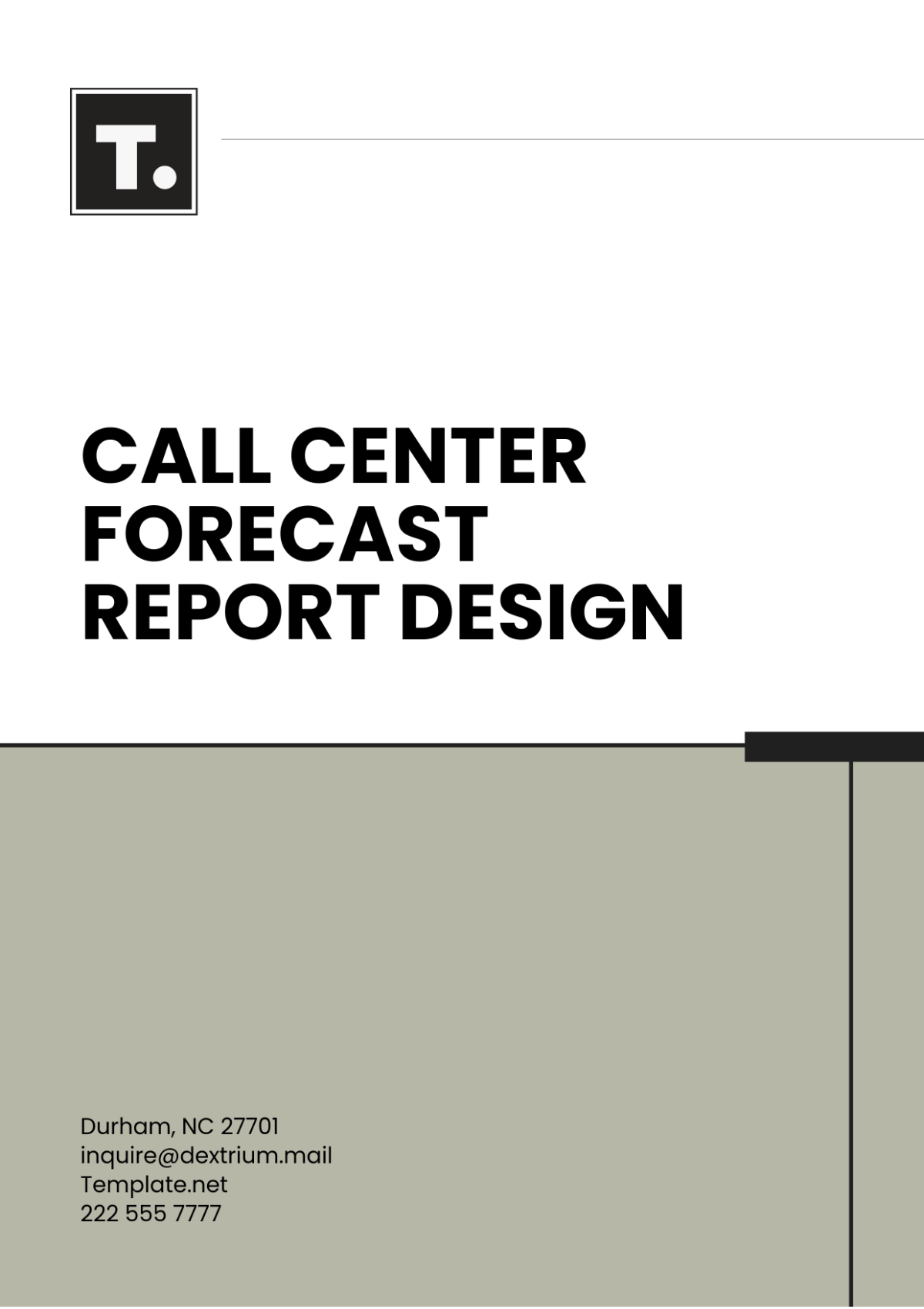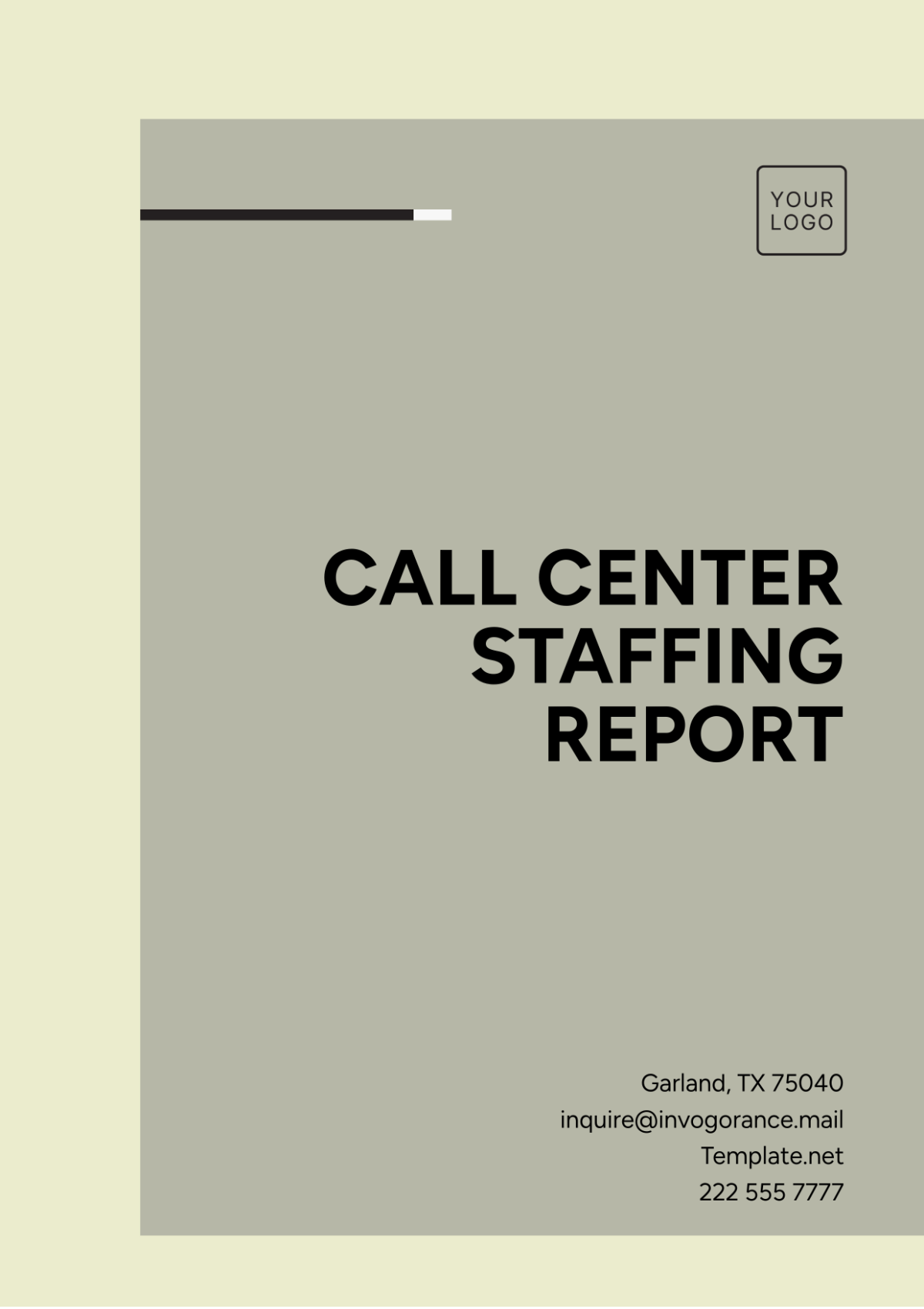Call Center Benchmark Report
Prepared by:
[YOUR NAME]
[Your Company Name]
Date:
October 30, 2050
Executive Summary
This Call Center Benchmark Report provides a comprehensive analysis of performance metrics for [Your Company Name]. It evaluates the call center’s operational metrics against industry standards to identify areas for improvement. The report’s findings reveal that while customer satisfaction scores are competitive, areas such as handling time and cost efficiency show potential for enhancement. The recommendations outlined aim to bring key performance metrics in line with industry benchmarks, supporting improved customer experience and operational cost control.
1. Introduction
Call centers are central to customer satisfaction and retention. In today's competitive environment, benchmarking enables managers to gauge performance against industry standards, providing a framework for strategic improvement. This report evaluates call center metrics to identify strengths and areas where operational adjustments can boost both efficiency and service quality.
2. Methodology
This report compiles data from various industry reports, internal performance data, and comparative benchmarks across the technology support sector. The benchmark data represent a combination of anonymized, aggregated metrics from leading call centers in the technology industry, covering Q1-Q3 2050.
Data Sources
Industry Reports: Aggregated insights from industry-wide data provided by Gartner, ICMI, and HDI.
Internal Metrics: Performance data covering January to September 2050.
Comparative Data: Technology industry benchmarks from similar call centers.
Key Metrics Assessed
Average Handle Time (AHT)
Customer Satisfaction (CSAT)
First Call Resolution (FCR)
Abandonment Rate
Cost per Call
3. Key Performance Metrics
Metric | Industry Standard | Acme’s Performance | Benchmark Status |
|---|---|---|---|
Average Handle Time (AHT) | 5–7 minutes | 8.5 minutes | Above Target |
Customer Satisfaction (CSAT) | 85–90% | 87% | On Target |
First Call Resolution (FCR) | 75–85% | 73% | Below Target |
Abandonment Rate | 3–5% | 6% | Above Target |
Cost per Call | $5–$7 | $8.25 | Above Target |
Summary of Findings
Average Handle Time (AHT): Currently 8.5 minutes, which is above the industry standard, indicating a need for faster issue resolution strategies.
Customer Satisfaction (CSAT): At 87%, satisfaction levels are within the industry norm, showing a strong customer service focus.
First Call Resolution (FCR): At 73%, FCR is slightly below the standard, suggesting a need for better resource alignment and agent training.
Abandonment Rate: Currently at 6%, above the 3-5% standard, pointing to potential issues with queue management and staffing.
Cost per Call: With a cost of $8.25, the expense is above the industry benchmark, suggesting room for cost optimization.
4. Benchmark Analysis
4.1 Average Handle Time (AHT)
AHT is a key measure of efficiency, with a standard of 5 to 7 minutes across the industry. An AHT of 8.5 minutes suggests that call processes could be streamlined. This may be due to extensive troubleshooting or a lack of tools for faster problem resolution.
4.2 Customer Satisfaction (CSAT)
With a CSAT score of 87%, performance meets the benchmark, reflecting strong customer interactions. This metric shows that while there is room for improvement, customer interactions are generally effective.
4.3 First Call Resolution (FCR)
FCR is at 73%, just below the industry norm of 75-85%. This suggests that customers often require multiple calls to resolve their issues, which could be improved by enhancing the knowledge base and empowering agents with decision-making capabilities.
4.4 Abandonment Rate
An abandonment rate of 6% exceeds the target of 3-5%, possibly indicating a need for better queue management, additional staffing during peak hours, or call-back options to reduce wait times.
4.5 Cost per Call
Currently, at $8.25, the cost per call is above the standard of $5 to $7. Reducing AHT and increasing FCR could help bring costs in line with industry benchmarks.
5. Recommendations
Reduce Average Handle Time (AHT): Implement enhanced call scripts and refresher training to support faster issue resolution. Integrate AI-driven support tools to aid agents with common inquiries and repetitive tasks.
Improve First Call Resolution (FCR): Regularly update and expand the internal knowledge base to ensure agents have quick access to information. Offer coaching sessions focused on empowering agents with problem-solving tools and techniques.
Optimize Abandonment Rate: Implement queue management solutions, such as call-back options during high-volume periods, and adjust staffing schedules to ensure peak times are adequately covered.
Reduce Cost per Call: Focus on lowering AHT and improving FCR through training and technological upgrades to make calls more efficient and reduce overall costs.
6. Conclusion
The call center demonstrates strong performance in customer satisfaction, aligning with industry expectations. However, opportunities exist to optimize handle time, first-call resolution, abandonment rate, and call costs. Addressing these areas will enhance overall efficiency, reduce costs, and improve the customer experience, positioning the center to better meet industry standards and exceed customer expectations.
Contact Information
[YOUR NAME]
Email: [YOUR EMAIL]
